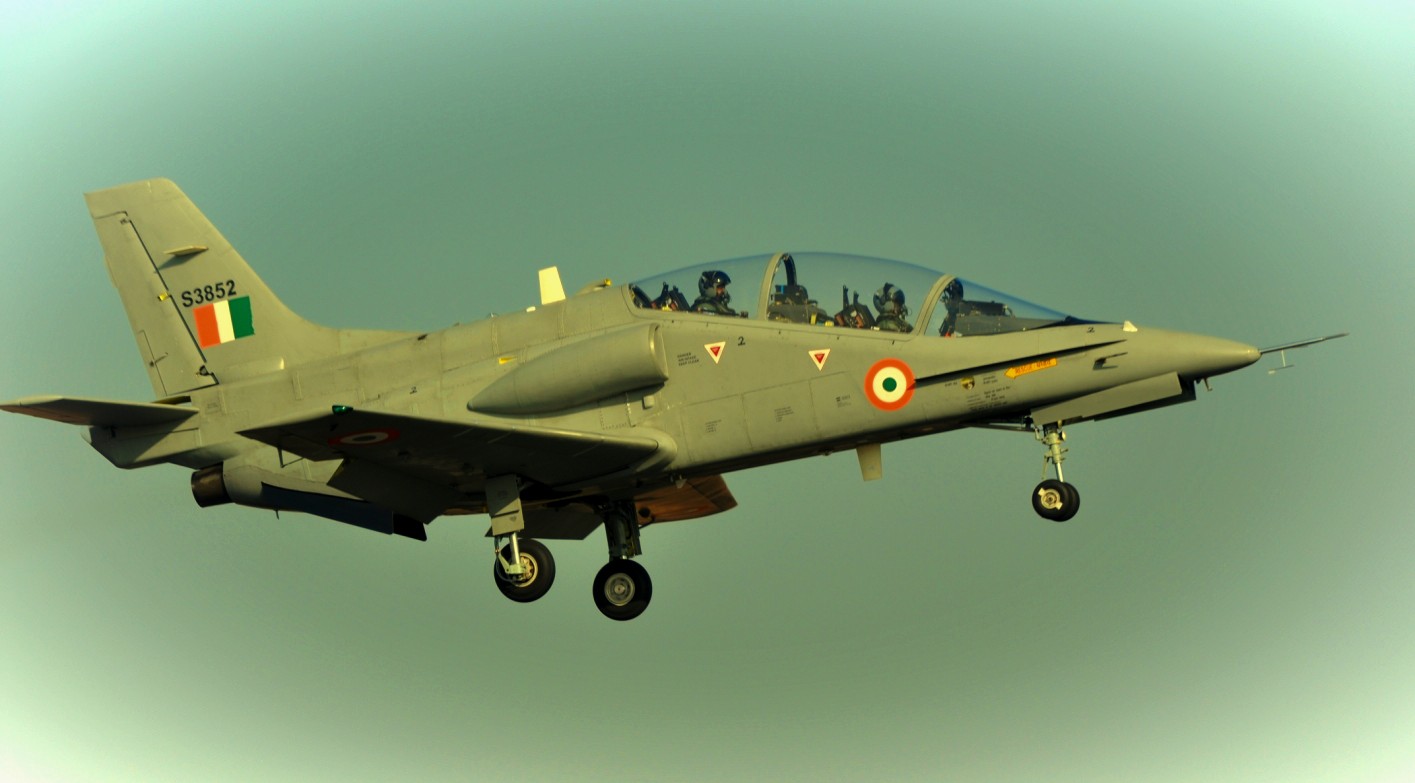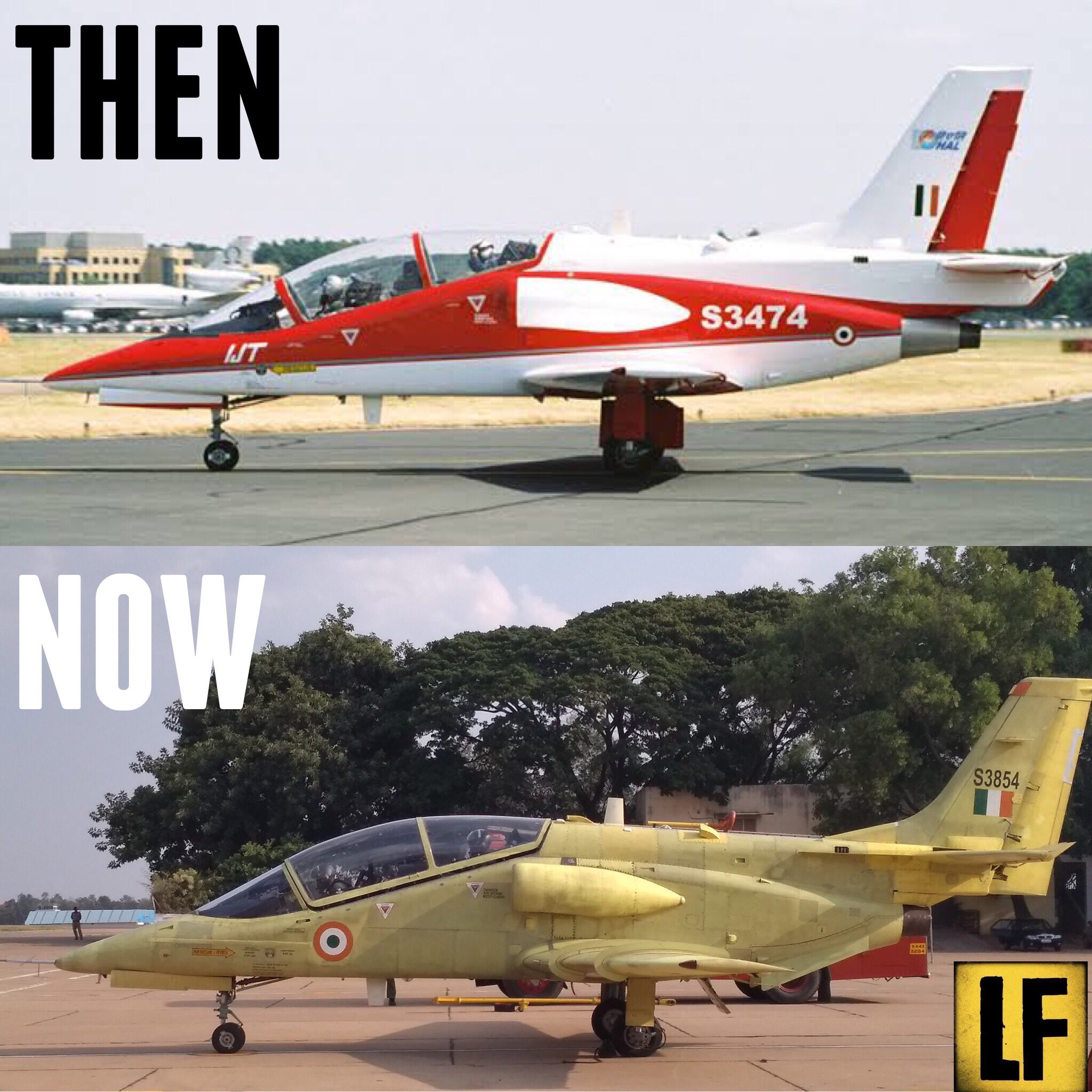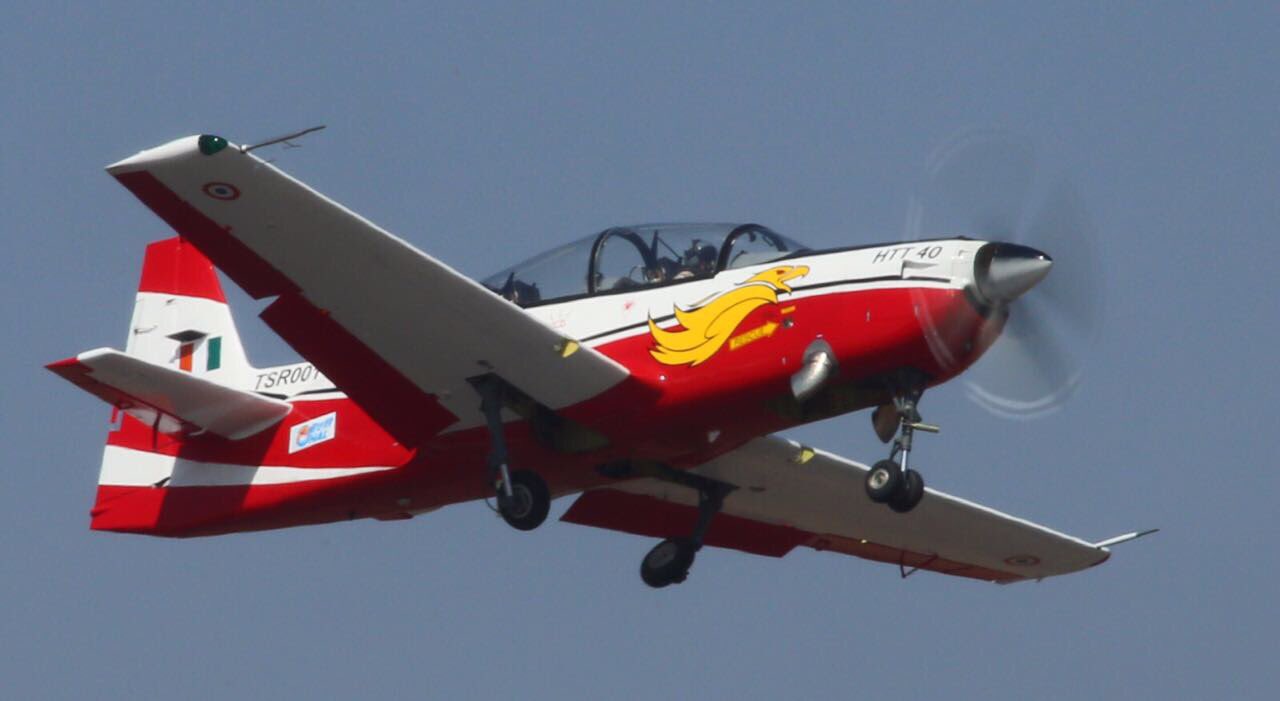
Four years after failed spin trials brought the aircraft program to a halt, HAL’s HJT-36 Sitara intermediate jet trainer (IJT) will restart a crucial set of spin trials this month. With a significantly altered airframe that returned to flight last April — and with a vitally awaited spin recovery parachute just delivered — test crews will shortly commence spin trials that must be successfully completed if the aircraft is to have a chance at survival.
Even though Sitara’s primary customer, the Indian Air Force, has planned for life without the aircraft that’s been proposed as a replacement to the ‘last legs’ HJT-16 Kiran, at HAL, the upcoming trials are being seen as nothing short of a crack at resurrection.
“We have not given up on the IJT, in fact we have restarted the program,”HAL chairman & managing director R. Madhavan tells Livefist. “In the previous one year, we have started working on it. We have changed the airframe to improve the spin capabilities. We were waiting for a spin parachute so we can begin testing the new changes.”
Flight test of the Sitara ground to a halt in 2016 after it became clear that spin trials couldn’t be completed safely on the then airframe. HAL spent the next three years using advice from U.S. aviation technology and testing firm Bihrle Applied Research Inc. to redesign major parts of the aircraft’s tail end, resulting in significant airframe changes, first visible when the redesigned jet flew in April 2019.
HAL will be hoping that spin trials mirror successes achieved with the sister HTT-40 propeller trainer program. In October last year, a series of videos captured the HTT-40‘s critical passage through spin tests, clearing decks for its final lap in development.
The Sitara team hopes this month’s tests will go the same way, after which comes the next challenge of persuading the Indian Air Force to make space for the jet. That won’t be easy, given the ill-tempered history between the two on this particular program. Delays in the Sitara program compelled the IAF to reconfigure its training regimen, which now sees flight cadets get their basic and intermediate training on PC-7 Mk.II propeller trainers and advanced/lead-in training on HAL-built Hawk Mk.132 jets. HJT-16 Kiran jets continue to be used in training, though the IAF has actively weaned training elements away from these ageing platforms.
The Sitara program, an offshoot of the Light Combat Aircraft (LCA) project began in 1999, six years after the LCA got its first program extension. At the time, HAL had pitched to the IAF that it would quickly develop and build a stage-two trainer to replace the HJT-16 Kiran, and that lessons from the LCA program would ensure quick results. From project sanction in July 1999 to a first flight in March 2003, the Sitara appeared to be on track, keeping its promise of a worthy early replacement to the Kiran. In August 2005, HAL signed on Russia’s NPO Saturn to license build Al-551 jet engines for production series Sitaras that would be commissioned into the IAF. These were to give the Sitara a markedly higher thrust to weight ratio than the French Lazarc engines that powered the first two prototypes.
Target certification and induction dates of 2008 slipped owing to development delays compounded by a runway accident in 2007 and then a crash of a prototype in 2011. Through its journey, the aircraft was refined and improved with a series of consultations with companies that included Snecma and Smiths Aerospace.
Seventeen years after the Sitara first flew, the flight tests that take place this month will determine if the aircraft has a career in the Indian military.
Misgivings over the Sitara, however, haven’t hit the HTT-40’s chances. Last November, in a major endorsement, Air Chief Marshal Rakesh Bhadauria strapped into an HTT-40 days a month after taking over as IAF chief. This was manna from heaven for HAL, which had seen the HTT-40 program nearly killed off by an earlier IAF chief in 2013 amidst deliveries of Swiss Pilatus PC-7 propeller trainers. While the IAF had initially planned for more numbers of the Pilatus planes, an investigation into illegal practices, and a one-year MoD ban that kicked into effect last year, the HTT-40’s path into service is even clearer. This is quite apart from the HTT-40 proving itself to be a very worthy trainer entirely on its own.
HAL chairman R. Madhavan tells Livefist, “This is a crucial program for us. Final certification was scheduled for this month, but has been shifted by about two months because of the Covid19 situation. Inquiries have come in regarding completion of this project. Initital expectation is about 70 aircraft for the IAF, we also have an urgent enquiry from a neighbouring country. We are very positive, it has great marketing potential.”



bhai, please proof read for readability, some of the phrases you write are so bad, one cannot make sense out of them. This: “Even though Sitara’s primary customer, the Indian Air Force, has planned for life without the aircraft that’s been proposed as a replacement to the ‘last legs’ HJT-16 Kiran, at HAL, the upcoming trials are being seen as nothing short of a crack at resurrection.” — Its such a pain to read it!!
India needs designers like Kelly Johnson. All government PSUs and their employees needs to learn how to work ‘the kelly way’. Anticipate , radical though brave ,time bound and always listens to the customer as well as his employees, who hates redtapes.